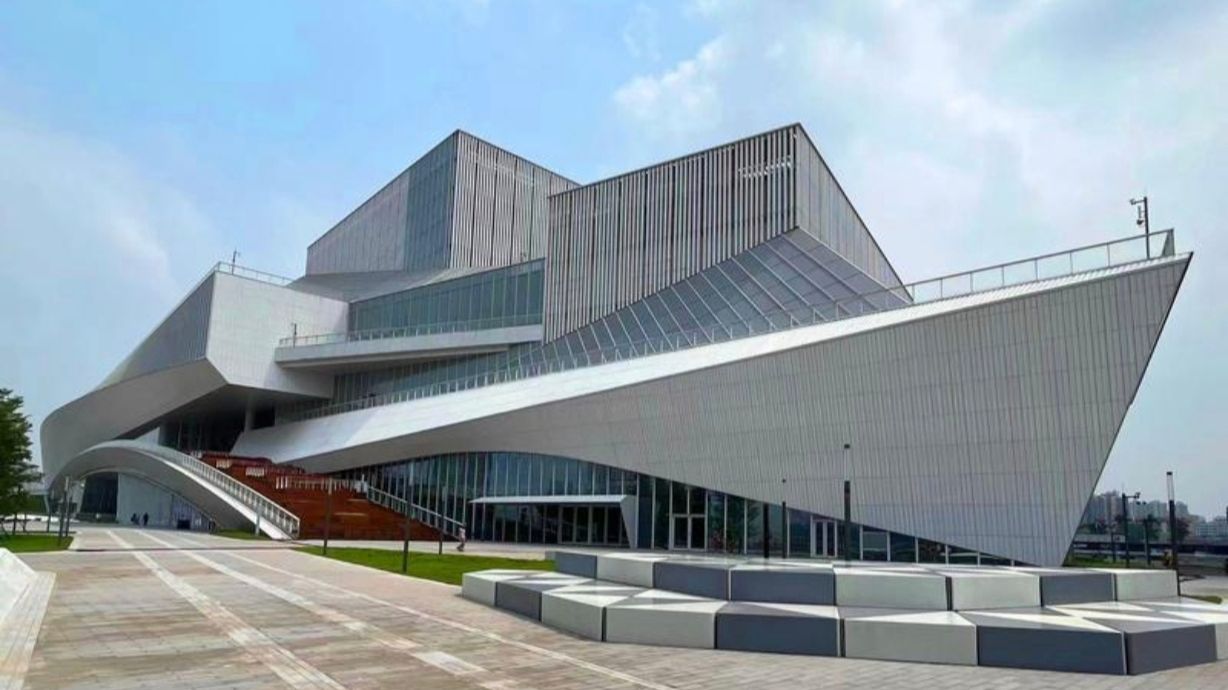The Bai'e Tan Greater Bay Area Art Center, officially opened on April 28 this year, is a new popular check-in spot in Guangzhou. It is located at the confluence of the three rivers by Bai'e Tan, resembling a large ship docked by the Pearl River. Inside, there are the Guangdong Museum of Art, the Guangdong Intangible Cultural Heritage Museum, and the Guangdong Literature Museum. Since my son is a volunteer at the Intangible Cultural Heritage Museum, my sister and I came to check in at the museum and see how my handsome guy is doing here.
Upon arriving at the entrance of the Intangible Cultural Heritage Museum, we saw this tall and handsome young man guiding an uncle on how to make a reservation on the machine. After he helped us with the reservation, we successfully entered the museum.
The Intangible Cultural Heritage Museum showcases many traditional Lingnan cultural craftworks, which are breathtaking and astonishing. Among them are Chaozhou wood carvings, Cantonese embroidery (Chao embroidery), ivory carvings, and cow bone carvings... I was left speechless, marveling at how Lingnan is truly a land of outstanding people and resources. A piece of ivory less than a meter long can be carved into many lifelike figures and scenes; the wisdom of humanity is truly immeasurable.
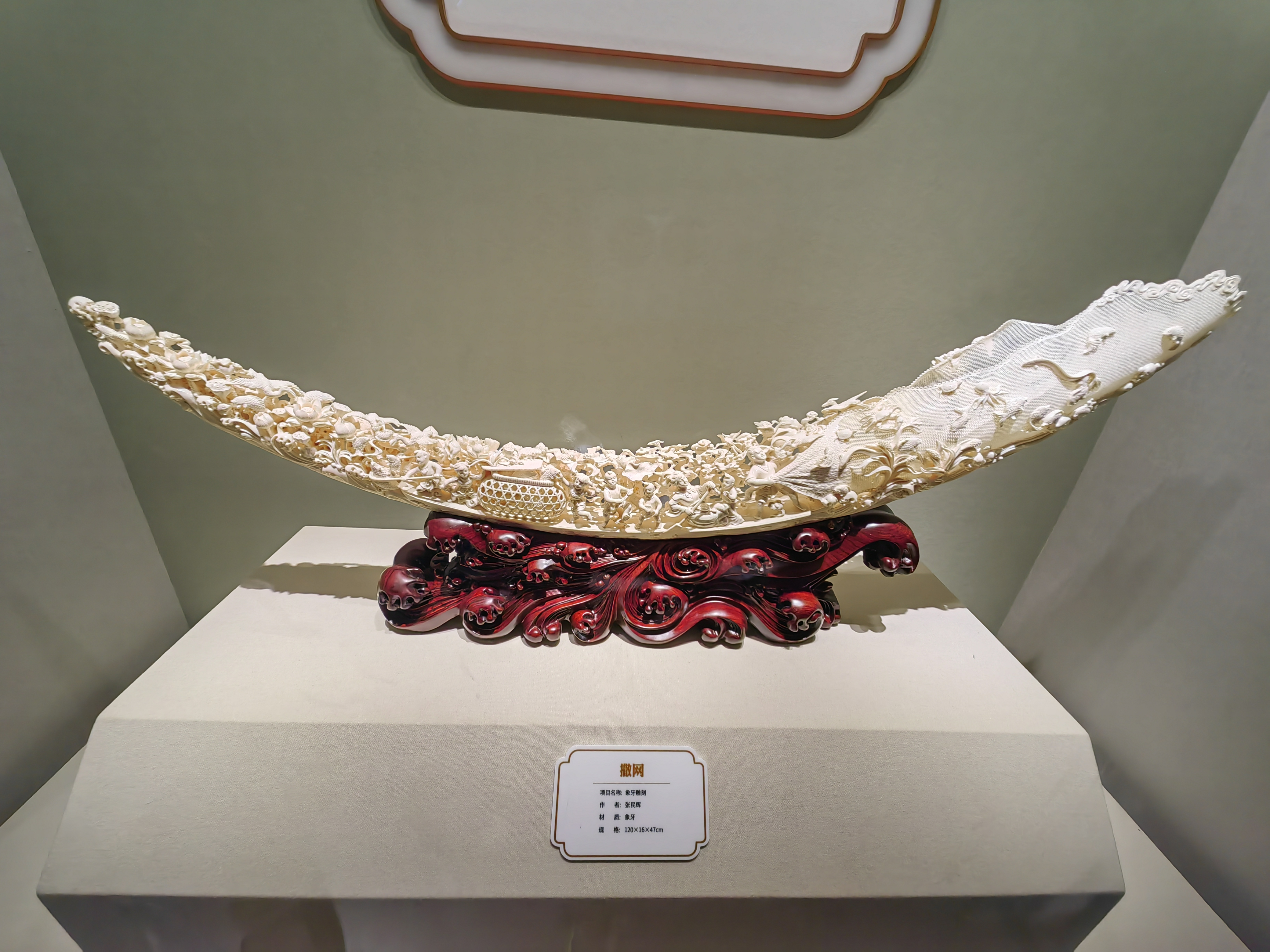
In front of a glass cabinet, there was a landscape painting framed with a wooden carved frame, and a small round magnifying glass was placed in front of the painting. At that moment, a guide came over and said to us, "In this landscape painting, there are fifty traditional characters in every square centimeter, and you need a magnifying glass to see them clearly."
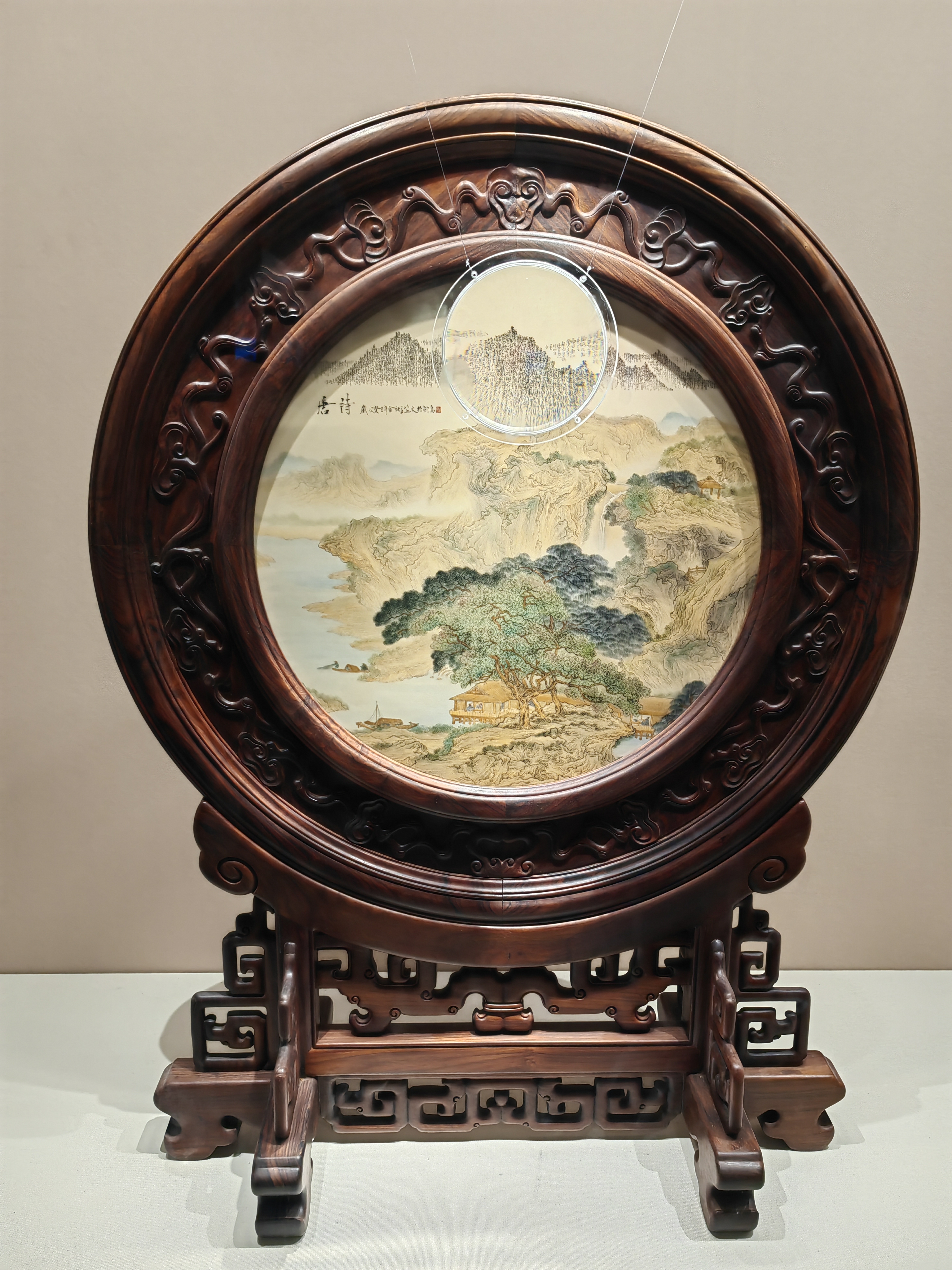
I couldn't help but exclaim, "Ah!" It was truly unimaginable.
The guide continued, "This work belongs to ceramic micro-calligraphy, which is one of the folk skills that perfectly combines Chinese calligraphy art with ceramic art. The author writes with a specially made brush using only the naked eye, and then it is fired into a piece... I really don't know what words to use to describe it. This is art."
Turning around, I couldn't find my sister. It turned out she was captivated by a small stone dog quietly squatting in the corner. This little dog resembled our former pet Dodo, mischievous and cute, showcasing the exquisite craftsmanship of Lingnan stone carving. I walked over and couldn't help but pat its head, just like I used to do with Dodo.
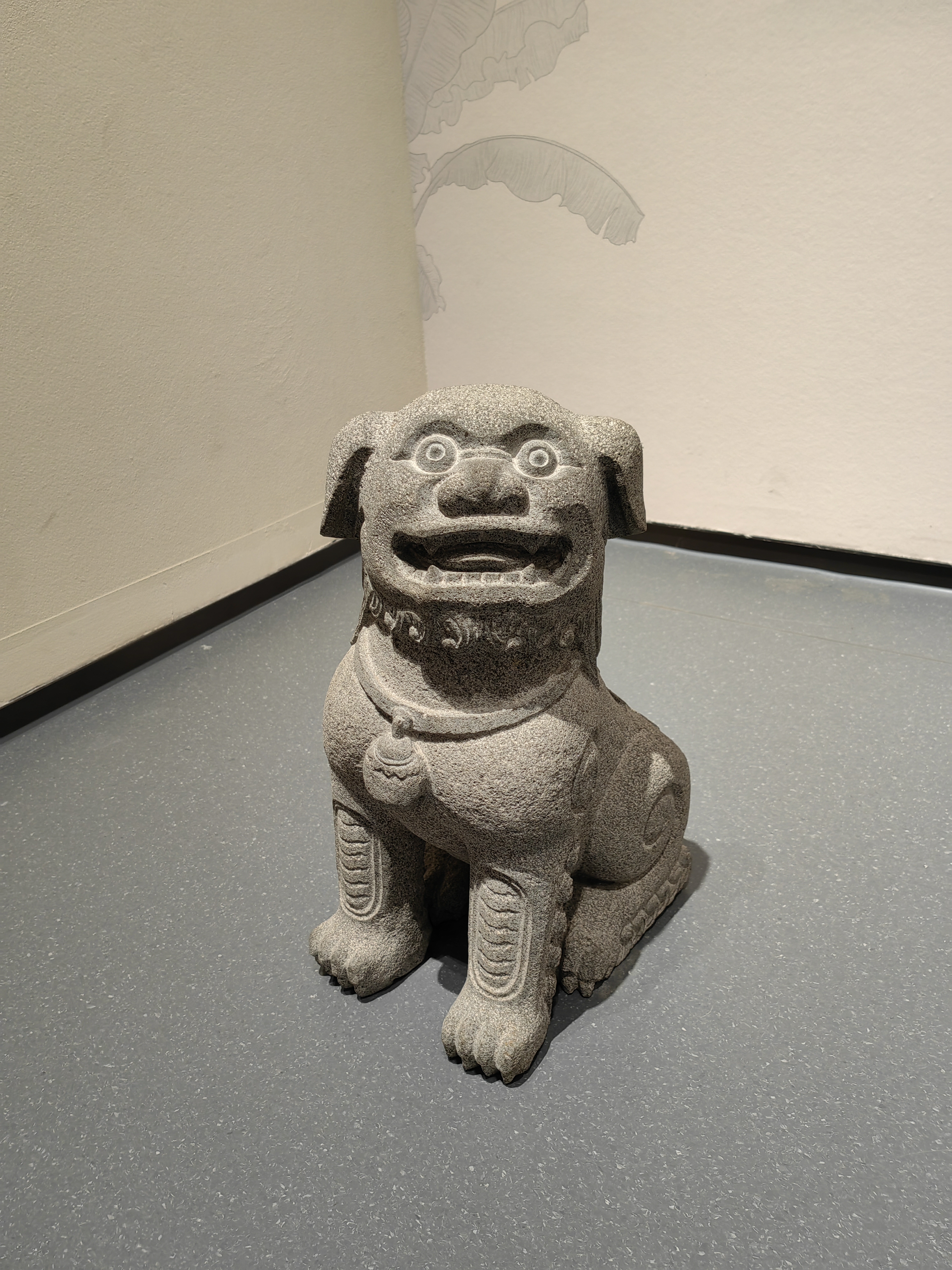
The intangible cultural heritage here evokes some childhood memories. In a corner, there was a display of bamboo crafts, and there was a bamboo chair by the wall. I felt a special familiarity and quickly called my sister over: "This bamboo chair is just like the one we used to sit on to cool off in the summer evenings when we were kids." My sister nodded vigorously. Nowadays, very few families in the city have such chairs; I didn't expect to see one here.
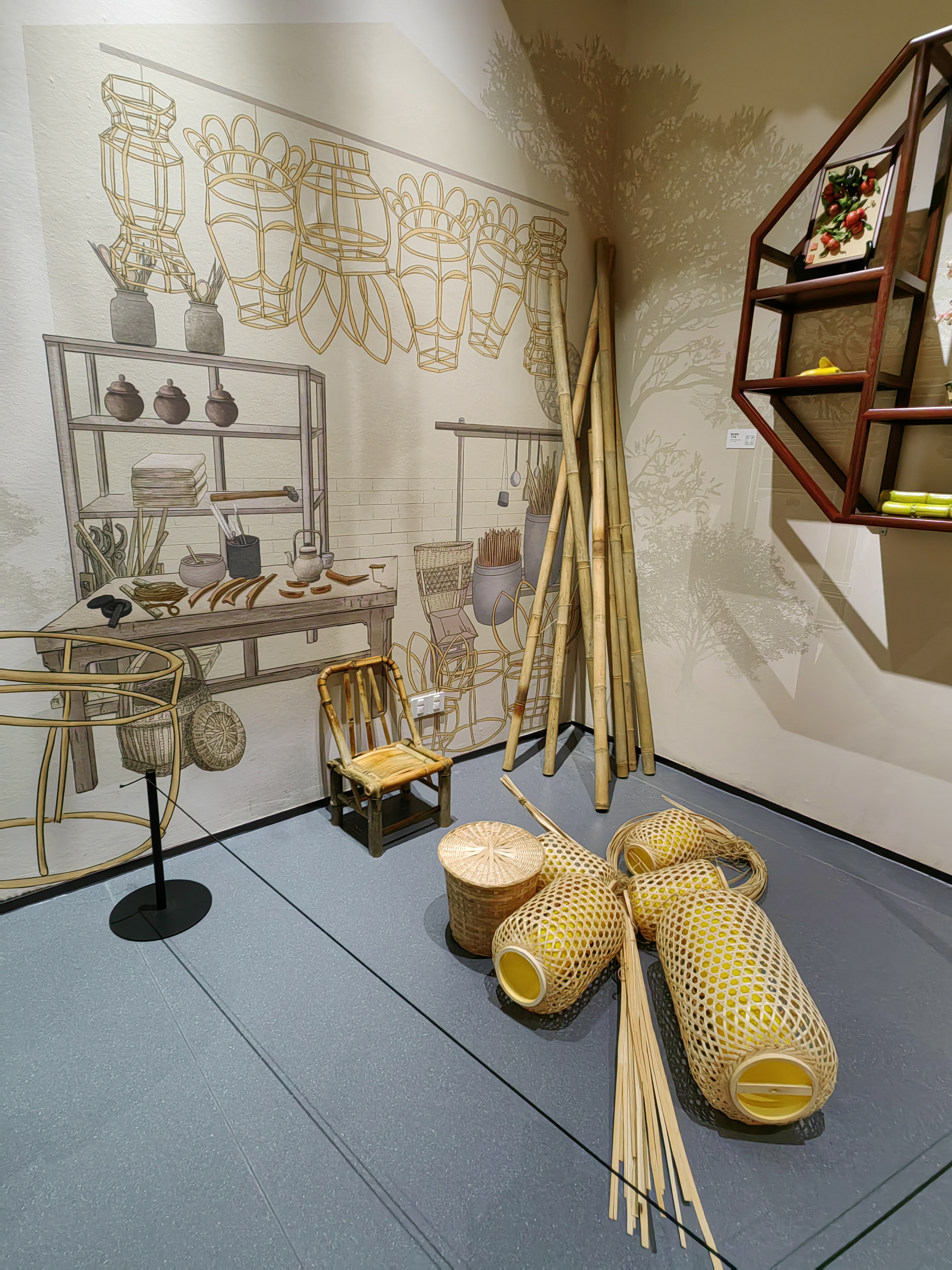
There were also some lively ceramic pieces, one of which depicted a barber cutting hair at a resident's door, while a man nearby leisurely enjoyed tea... This scene reminded me of my childhood when two barbers would often walk through our neighborhood shouting about their services. My dad loved to go to the barber known as "Flying Hair Zhen," and looking at this piece, it seemed like that barber was "Flying Hair Zhen," and the seated figure was my dad when he was young. 😬

After walking four floors and spending nearly two hours admiring the exhibits, the heat outside was intense, but the air conditioning inside was refreshing and comfortable. I appreciated the profoundness of Lingnan culture and felt proud to be a Lingnan person. There are too many exquisite works here to describe one by one; it's like a small bowl of delicious soup, but to truly savor a big pot of abalone, shark fin, and tripe soup, you have to go there in person to taste it.
